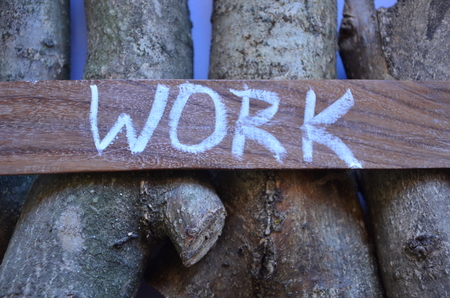Understanding Burnout in the American Workplace
Burnout is more than just a buzzword in today’s fast-paced American workplace—it’s a real and growing concern that impacts employee well-being, productivity, and retention. In the U.S., work culture often celebrates long hours, constant availability, and a “hustle” mentality, which can make it challenging for individuals to set healthy boundaries. The pressure to perform, meet ambitious targets, and stay connected even after traditional work hours has become the norm across many industries.
This culture of overwork can lead to chronic stress, emotional exhaustion, and disengagement—classic signs of burnout. For managers, recognizing these early warning signs is not just about supporting team morale; it’s about maintaining a healthy and sustainable workplace where employees can thrive. By understanding how burnout manifests in the context of American work expectations, managers are better equipped to intervene early, foster resilience, and create an environment where both business goals and employee wellness go hand-in-hand.
2. Spotting the Early Warning Signs
Burnout rarely happens overnight; it’s a gradual process, often hidden behind small shifts in attitude, behavior, and work performance. As a manager, your ability to spot these early warning signs is essential for supporting your team and maintaining a healthy work environment. Recognizing these red flags early gives you the chance to take proactive steps before burnout takes hold.
Changes in Attitude
Employees experiencing early burnout might display subtle shifts in their overall outlook. Look for increased negativity, cynicism, or detachment from colleagues and projects. They may seem less enthusiastic about challenges or more resistant to change. These attitudinal changes can be easy to dismiss as someone just having a “bad week,” but when they persist, they warrant attention.
Behavioral Red Flags
Watch for patterns in daily behaviors that differ from an employee’s norm. This could include frequent tardiness, missed deadlines, or increased absenteeism. Social withdrawal is another common sign—employees might skip team meetings, avoid collaboration, or become unusually quiet during discussions. Below is a table summarizing key behavioral indicators:
| Behavioral Change | What to Watch For |
|---|---|
| Increased Absences | Frequent sick days or late arrivals without clear reasons |
| Withdrawal | Avoids meetings, group chats, or social events |
| Reduced Productivity | Decline in quality or quantity of work output |
| Forgetfulness | Missing deadlines or overlooking important details |
Performance Patterns
Early burnout often manifests as a dip in performance. Employees who were once high achievers may begin producing inconsistent results or appear disengaged from their tasks. You might notice they’re taking longer to complete routine assignments or are making uncharacteristic mistakes.
Spotting Patterns vs. Isolated Incidents
It’s important to distinguish between one-off incidents and consistent patterns over time. Everyone has an occasional off day—burnout is usually marked by a trend of ongoing issues rather than isolated slip-ups.
Cultural Context: The American Workplace Lens
In the U.S., where hustle culture and individual achievement are often celebrated, employees may hesitate to admit they’re struggling until symptoms become severe. Managers should foster open communication and lead with empathy to encourage honesty about workload and well-being.
By staying alert to these subtle warning signs—and understanding their cultural context—you can help protect your team from burnout and create a workplace where everyone can thrive.

3. Fostering Open Communication
Creating an environment where open communication thrives is essential for recognizing burnout early and supporting your teams wellbeing. As a manager, building trust starts with transparency and authenticity—showing your team you genuinely care about their experiences and challenges. Encourage honest conversations about stress by normalizing these discussions in everyday interactions. For example, share your own strategies for coping with pressure or talk openly about the importance of mental health. This vulnerability sets the tone that its safe for others to speak up.
One effective way to keep tabs on your teams wellbeing is through regular check-ins. These dont have to be formal—sometimes a quick Slack message or a casual coffee chat can make all the difference. Use these moments to ask open-ended questions like, “How are you really doing?” or “Is there anything on your plate thats starting to feel overwhelming?” Avoid jumping straight into solutions; instead, listen actively and validate their feelings.
Trust is built over time, so follow through on promises and respect confidentiality when team members share concerns. When someone opens up about feeling stressed or burned out, respond with empathy and offer practical support, whether thats adjusting workloads, connecting them with resources, or simply giving them space to recharge. By making open communication a core part of your leadership style, youll be better equipped to spot early warning signs of burnout—and create a culture where everyone feels empowered to ask for help before things spiral.
4. Taking Preventative Action
Once you’ve spotted the early warning signs of burnout on your team, it’s time to move from awareness to action. Proactive measures not only help prevent burnout but also foster a culture of trust, flexibility, and long-term engagement. Here are practical steps managers can take to reduce the risk of burnout:
Promote Flexibility and Work-Life Balance
Empowering employees with flexibility is a game-changer. Consider offering flexible hours or remote work options when possible. Regularly encourage your team to unplug after work hours and use their PTO—don’t just approve vacation requests, actively check in to ensure people are taking needed breaks.
Reassess Workloads and Expectations
Managers need to regularly review workloads and reset expectations as priorities shift. Open communication is key: ask your team what feels manageable, and be ready to rebalance tasks as needed. Here’s a simple guide:
| Area | Proactive Step | Managers Action |
|---|---|---|
| Workload Management | Monitor assignments and adjust as needed | Hold regular one-on-ones to discuss task loads; redistribute if someone is overwhelmed |
| Expectations Setting | Clarify goals and deadlines | Set SMART (Specific, Measurable, Achievable, Relevant, Time-bound) goals together |
| Flexibility Support | Offer adaptable schedules or remote options | Create core hours for meetings but allow flexible start/end times |
| PTO & Breaks | Encourage real downtime | Model healthy boundaries by not emailing after hours; remind staff to take days off regularly |
Cultivate an Open Feedback Loop
Create a space where your team feels safe to share concerns about workload or stress. Make it clear that feedback is welcome and will lead to real changes—not just lip service.
Quick Tip:
If you notice productivity dropping or morale slipping, don’t wait for annual reviews—address it in real-time. Small adjustments early on can prevent bigger problems down the road.
5. Supporting Affected Employees
When you spot early signs of burnout in your team, proactive support is essential. Approaching employees who may be struggling requires sensitivity, empathy, and a clear intention to help—not judge. Start by scheduling a private, one-on-one conversation in a comfortable setting. Express concern using specific observations rather than assumptions, and listen actively to their experiences. It’s important to validate their feelings and let them know that you’re invested in their well-being.
Connecting Team Members with Resources
Managers should be familiar with the company’s available resources, such as Employee Assistance Programs (EAP), mental health benefits, flexible work arrangements, or wellness initiatives. Offer information about these resources without pressure, framing them as tools for self-care and resilience. Encourage employees to take advantage of time off when needed and reassure them that prioritizing mental health is supported by leadership.
Personalized Action Plans
No two employees experience burnout the same way, so co-create a personalized action plan tailored to their unique needs. This could include adjusting workloads, redefining priorities, temporarily shifting responsibilities, or setting boundaries around after-hours communication. Collaborate on realistic short-term goals that allow space for recovery without sacrificing performance expectations.
Building a Culture of Ongoing Support
Supporting an affected employee doesn’t end after one conversation or quick fixes—it’s about fostering an environment where open dialogue and ongoing check-ins are the norm. Regularly follow up to assess progress and adapt plans as necessary. By leading with compassion and flexibility, managers can not only help individuals recover from burnout but also strengthen team trust and resilience for the long haul.
6. Building a Resilient Team Culture
Prioritizing Mental Health
To truly recognize and address the early warning signs of burnout, managers need to create an environment where mental health isn’t just discussed, but prioritized. This means normalizing conversations around stress, workload, and emotional well-being. Start by scheduling regular check-ins that go beyond project status updates—ask how your team is feeling and make space for honest dialogue. Provide access to mental health resources, such as Employee Assistance Programs or mindfulness workshops, and encourage employees to take advantage of these benefits without stigma.
Celebrating Autonomy
A resilient team thrives when its members feel trusted and empowered. Give your team the autonomy to approach projects in ways that align with their strengths and working styles. Encourage flexible work arrangements, whether that’s remote work options or adjustable hours, and be transparent about expectations. Recognize and celebrate initiative—when someone takes ownership or brings a new idea to the table, acknowledge it publicly. This not only fuels motivation but also helps prevent burnout by reducing micromanagement and building trust.
Encouraging Continuous Growth and Support
Growth opportunities are key to keeping teams energized and engaged. Facilitate learning by offering access to professional development courses, mentorship programs, or cross-functional projects. Create a culture of feedback that is constructive and ongoing—not just reserved for annual reviews—so employees know where they stand and how they can improve. Pair this with peer support systems: consider setting up buddy programs or informal discussion groups where colleagues can share challenges and wins.
Tips for Fostering Team Resilience
- Model healthy boundaries by taking time off yourself and respecting others’ downtime.
- Celebrate small wins as much as big achievements to maintain momentum and morale.
- Encourage open communication—let your team know it’s okay to ask for help or say no when overloaded.
- Regularly pulse-check engagement levels using anonymous surveys or one-on-one meetings.
Together Toward Sustainable Success
Building a resilient team culture isn’t a one-time effort—it’s a continuous process rooted in trust, respect, and shared growth. By embedding these practices into your leadership style, you’ll not only spot burnout before it escalates but also create a workplace where people feel valued, supported, and ready to bring their best selves every day.


